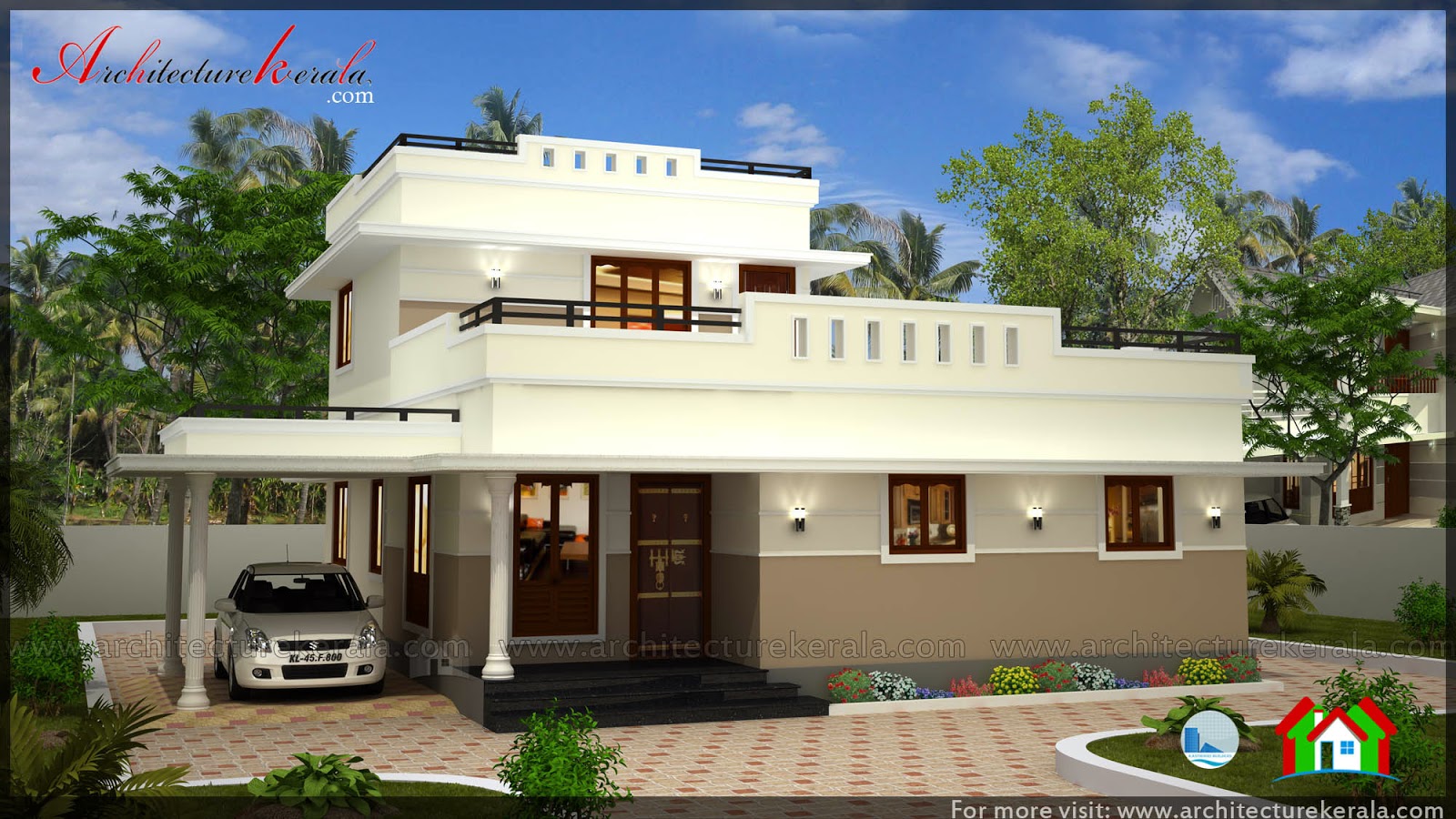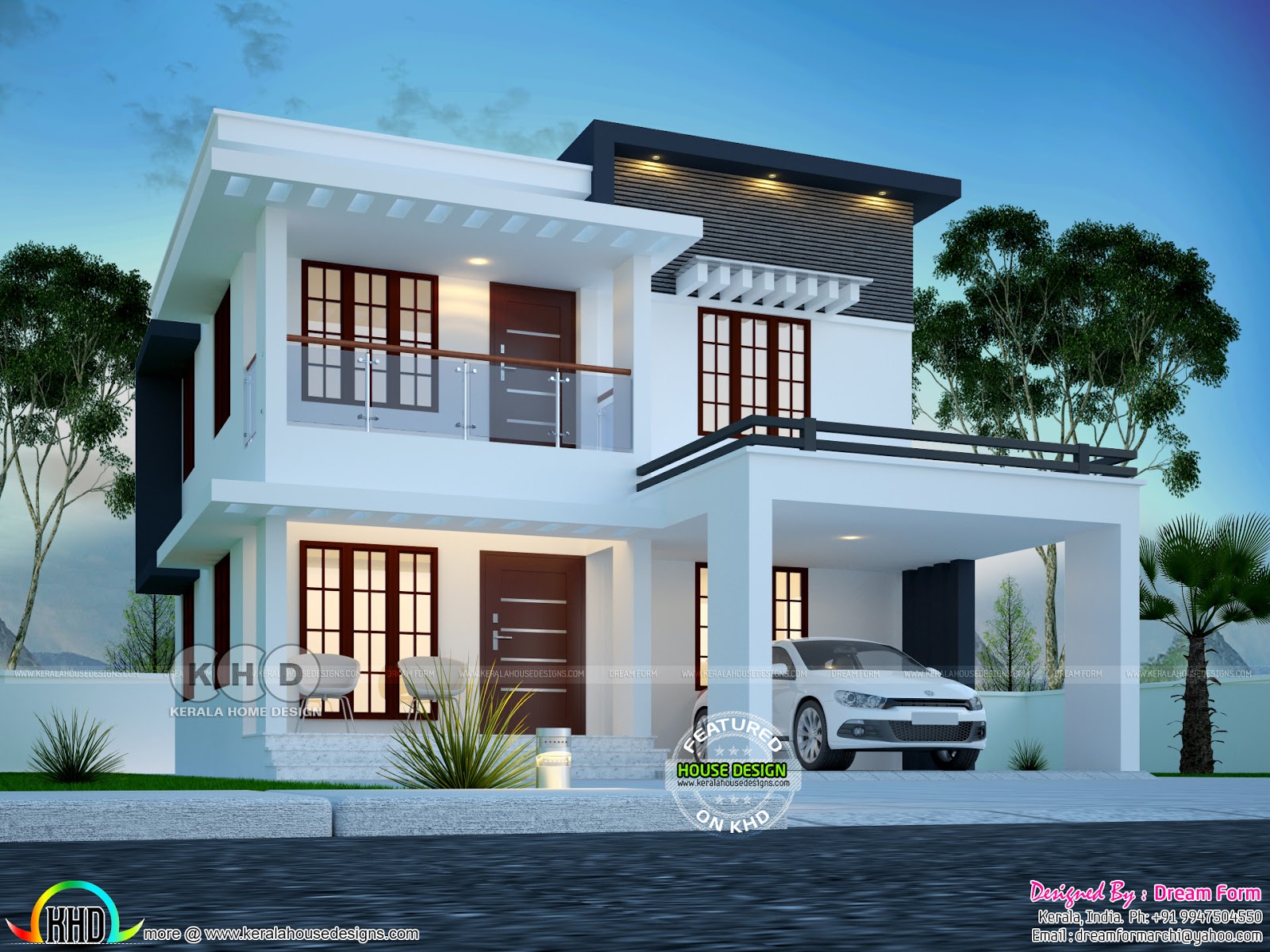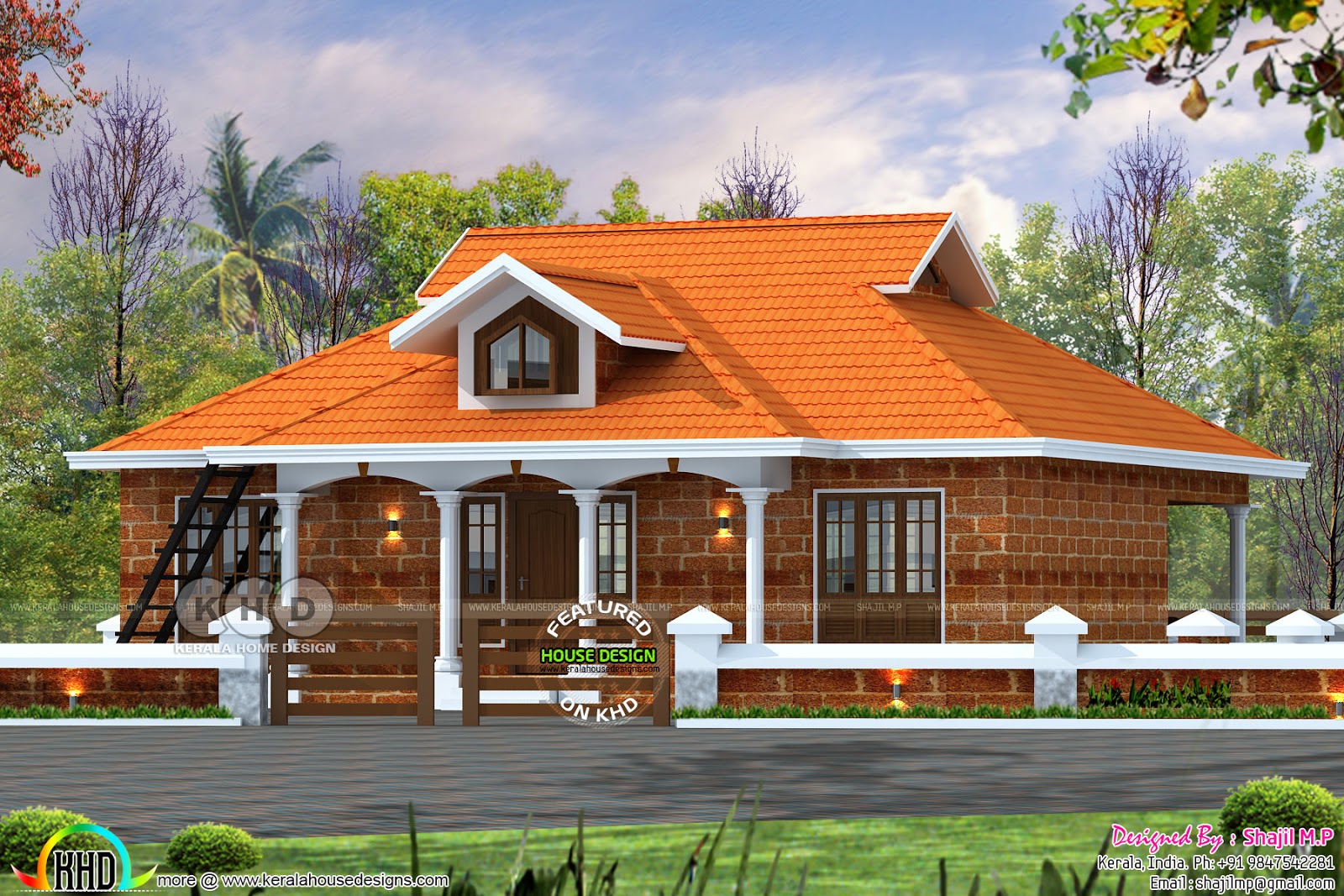Understanding Kerala’s Architectural Style

Kerala’s architectural style is a unique blend of traditional wisdom and modern sensibilities, reflecting the region’s rich history, climate, and culture. This distinctive style is characterized by its emphasis on natural materials, open spaces, and sustainable practices, creating homes that are both aesthetically pleasing and environmentally responsible.
Kerala’s Climate and Culture Influence Home Design, Home plans 3 bedroom kerala
Kerala’s tropical climate, with its high humidity and abundant rainfall, has significantly influenced the design of traditional homes. The architecture focuses on creating well-ventilated spaces that allow for natural air circulation and prevent heat buildup. This is achieved through the use of large windows, high ceilings, and verandahs that provide shade and shelter from the sun.
The culture of Kerala also plays a vital role in shaping home design. The emphasis on family and community is reflected in the open layouts and courtyards that encourage social interaction. The use of natural materials, such as wood, bamboo, and terracotta, reflects a deep respect for nature and the environment.
Common Architectural Features Found in Kerala Homes
Traditional Kerala homes are known for their distinctive architectural features, which have been passed down through generations. These features not only contribute to the aesthetic appeal of the homes but also serve practical purposes.
- Verandahs: Verandahs are an essential part of Kerala homes, providing a shaded space for relaxation and social gatherings. They also act as a buffer zone between the interior and exterior, helping to regulate temperature and humidity.
- Gable Roofs: Gable roofs are common in Kerala homes, with their sloping design allowing for rainwater to drain quickly. The roofs are often constructed using traditional materials like terracotta tiles or thatched leaves, adding to the rustic charm of the homes.
- Open Layouts: Kerala homes often feature open layouts, with minimal walls and partitions. This creates a sense of spaciousness and allows for natural light and ventilation to flow freely throughout the house.
- Courtyards: Courtyards are an integral part of Kerala homes, providing a central space for family gatherings and outdoor activities. They also help to improve air circulation and create a sense of privacy.
- Wooden Windows and Doors: Wooden windows and doors are a hallmark of Kerala architecture, providing natural ventilation and allowing for ample light to enter the home. They are often intricately carved with traditional designs, adding to the aesthetic appeal of the homes.
- Bamboo and Thatch: Bamboo and thatch are widely used in Kerala homes, particularly for roofing and walls. These materials are sustainable, readily available, and provide excellent insulation against heat and rain.
- Traditional Paintings and Murals: Kerala homes are often adorned with traditional paintings and murals, depicting scenes from mythology, folklore, and everyday life. These artworks add a touch of cultural richness and beauty to the homes.
3-Bedroom Home Plans

A 3-bedroom Kerala home plan is a popular choice for families, offering a comfortable and functional living space. Kerala’s architectural style emphasizes natural materials, open spaces, and a connection with nature. This section will explore the design elements of a 3-bedroom Kerala home plan, providing insights into traditional features, modern amenities, and various layout options.
Kerala Style 3-Bedroom Home Plans: Design and Layout
A 3-bedroom Kerala home plan typically features a combination of traditional elements and modern amenities. The design often incorporates a central courtyard, known as a “naalukettu,” which provides natural light and ventilation. The rooms are usually arranged around the courtyard, creating a sense of privacy and tranquility. Here are some common design elements:
- Verandah: A spacious verandah is a prominent feature of Kerala homes, providing a shaded outdoor space for relaxation and socializing.
- Open-to-Sky Courtyard: A central courtyard allows for natural light and ventilation to flow through the house, creating a refreshing and airy atmosphere.
- Traditional Roofing: Kerala homes are often characterized by their sloping tiled roofs, which are designed to withstand the region’s heavy monsoon rains.
- Natural Materials: Wood, bamboo, and terracotta are commonly used materials in Kerala homes, adding warmth and a rustic charm to the interiors.
- Modern Amenities: Modern amenities such as air conditioning, solar panels, and smart home technology can be incorporated into Kerala home designs, balancing traditional aesthetics with contemporary functionality.
Floor Plan Examples
Here are some examples of floor plan layouts for a 3-bedroom Kerala home:
Layout 1: Open Plan Living
This layout features an open-plan living, dining, and kitchen area, maximizing space and creating a sense of openness. The bedrooms are located on one side of the house, providing privacy.
Example: The living area could be connected to the dining area, with the kitchen positioned behind it, allowing for a smooth flow of movement. The three bedrooms could be situated on one side of the house, each with an attached bathroom.
Layout 2: Separate Living and Dining
This layout offers a more traditional approach with separate living and dining areas. The bedrooms are located on the opposite side of the house from the living areas, providing privacy and quiet.
Example: The living room could be situated at the front of the house, with the dining area located behind it. The bedrooms could be located on the opposite side of the house, each with its own bathroom.
Layout 3: L-Shaped Plan
This layout is ideal for narrow plots of land. The bedrooms are located on one side of the house, with the living, dining, and kitchen areas situated on the other side, forming an L-shape.
Example: The living, dining, and kitchen areas could be located on one side of the house, forming an L-shape, with the bedrooms positioned on the other side, creating a sense of separation and privacy.
Advantages and Disadvantages of 3-Bedroom Kerala Home Plan Layouts
Here are some of the advantages and disadvantages of different 3-bedroom Kerala home plan layouts:
Advantages:
- Open Plan Living: Maximizes space, creates a sense of openness, and allows for easy interaction between family members.
- Separate Living and Dining: Provides privacy and quiet for each area, ideal for families who enjoy separate spaces for relaxation and entertainment.
- L-Shaped Plan: Efficient use of space, ideal for narrow plots of land.
Disadvantages:
- Open Plan Living: Can be noisy and difficult to create a sense of privacy, especially with young children.
- Separate Living and Dining: Can feel less spacious and less connected, especially in smaller homes.
- L-Shaped Plan: May limit the amount of natural light and ventilation in some areas.
Essential Considerations for Kerala Home Plans: Home Plans 3 Bedroom Kerala

Kerala’s architectural style is renowned for its harmony with nature, and building a home in this region requires careful consideration of various factors to ensure a comfortable, sustainable, and aesthetically pleasing living space.
Incorporating Natural Light and Ventilation
Natural light and ventilation are crucial elements in Kerala home designs, contributing significantly to the overall well-being and energy efficiency of the dwelling.
- Maximizing Sunlight: Kerala’s tropical climate demands ample natural light, which can be achieved through large windows, strategically placed skylights, and courtyards. This not only brightens the interior but also reduces the need for artificial lighting during the day, saving energy.
- Promoting Air Circulation: Ventilation is equally important, ensuring a constant flow of fresh air and preventing humidity buildup. This can be accomplished through cross-ventilation techniques, using windows on opposite sides of the house to create a natural breeze. Open verandahs and balconies also contribute to better air circulation.
- Optimizing Orientation: The orientation of the house plays a vital role in maximizing natural light and ventilation. In Kerala, it’s recommended to position the main living areas facing east or south to take advantage of the morning sun and minimize heat gain during the day.
Using Sustainable and Eco-Friendly Materials
Kerala’s rich natural resources provide an abundance of sustainable and eco-friendly building materials that are both environmentally responsible and aesthetically pleasing.
- Bamboo: A fast-growing and readily available resource, bamboo is a versatile material used for structural elements, flooring, and even roofing. Its strength, durability, and low carbon footprint make it an excellent choice for sustainable construction.
- Wood: Kerala is known for its teak and rosewood forests, providing high-quality timber for building purposes. While responsible harvesting practices are crucial, wood remains a valuable and sustainable material for construction.
- Clay: Clay is a natural and abundant material used for making bricks, tiles, and even walls. Its thermal properties help regulate temperature inside the house, providing a cool and comfortable living environment.
- Coconut Fiber: A byproduct of the coconut industry, coconut fiber is used as a natural insulator and soundproofing material. It is also used in making ropes, mats, and other household items, promoting a circular economy.
Choosing the Right Building Materials and Techniques
Selecting the right building materials and techniques is essential for ensuring the durability, longevity, and aesthetic appeal of a Kerala home.
- Local Expertise: Consult with local builders and architects who have experience working with traditional Kerala building materials and techniques. Their knowledge of the climate, soil conditions, and available resources can guide you in making informed decisions.
- Durability and Longevity: Prioritize materials known for their durability and resistance to weather conditions. Consider factors like termite resistance, moisture resistance, and fire safety.
- Maintenance and Repair: Choose materials that are easy to maintain and repair. This ensures that your home stays in good condition for years to come.
- Aesthetic Appeal: Kerala’s architectural style is known for its simplicity and elegance. Select materials that complement this aesthetic, using natural colors, textures, and finishes.
Home plans 3 bedroom kerala – If you’re looking for spacious and comfortable living, 3-bedroom home plans in Kerala offer a range of styles and layouts. For those seeking a similar living experience in a different environment, you might consider exploring 3 bedroom apartments in State College.
Whether you prefer the traditional charm of Kerala or the vibrant atmosphere of a college town, finding the perfect 3-bedroom space is just a click away.
When designing your 3-bedroom Kerala home, don’t forget the finishing touches. One detail that often gets overlooked is the bathroom rugs, but the question of whether they have to match is an interesting one. You can check out this article do bathroom rugs have to match for some inspiration, but ultimately, it’s your personal style that matters most in creating a home you love.
So, whether you go for a cohesive look or embrace eclectic choices, your Kerala home plan will be a reflection of your unique taste.